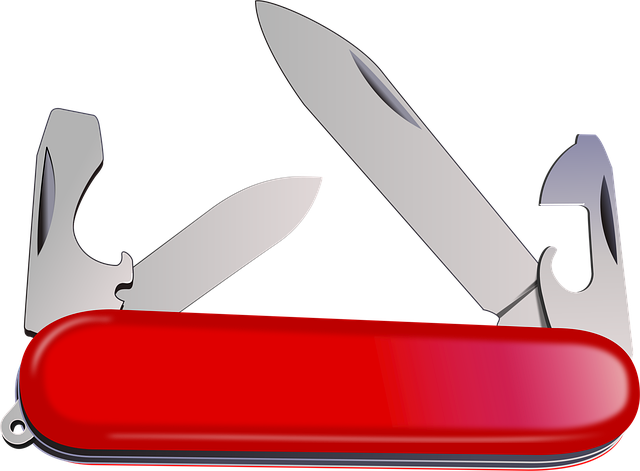Using a smart internal links tool optimizes website architecture for search engines, enhances user experience, and boosts rankings. These tools curate links based on relevance, keywords, and behavior, automating strategic link placement like contextual linking. By analyzing data, they provide insights to improve crawlability, attract organic traffic, and ensure higher SERP positions. Measuring success through analytics helps refine content architecture for better engagement and SEO performance.
Looking to unlock your website’s full SEO potential through smart internal linking? This comprehensive guide is your roadmap. We explore strategies that boost user experience, optimize link performance, and highlight powerful tools to streamline your process. Learn how to craft relevant internal links, track their success, and follow best practices for maximum impact. Discover the secrets to effective internal linking using cutting-edge smart internal links tools.
- Unlocking SEO Potential: Smart Link Strategies
- Efficient Internal Linking for Optimal User Experience
- Tools to Streamline Your Internal Link Building Process
- Crafting Relevant Internal Links for Maximum Impact
- Measuring Success: Tracking Internal Link Performance
- Best Practices for Effective Internal Link Optimization
Unlocking SEO Potential: Smart Link Strategies

Unlocking SEO potential requires a strategic approach to internal linking – enter smart internal links tools. These innovative solutions go beyond simple hyperlinking, offering sophisticated strategies to optimize your site’s architecture for search engines. By employing smart internal link techniques, you can create a seamless user experience while boosting your website’s visibility and authority.
A smart internal links tutorial or strategy involves carefully curating links based on relevance, keyword targeting, and user behavior. This means linking content that complements each other, sharing authority and driving users deeper into your site. Tools designed for this purpose analyze your website’s data, identify opportunities for improvement, and provide actionable insights to enhance smart internal links optimization. Ultimately, these strategies not only improve crawlability but also enrich the overall user journey, ensuring your website ranks higher and attracts more organic traffic.
Efficient Internal Linking for Optimal User Experience

Efficient Internal linking is a cornerstone of any well-structured website, playing a pivotal role in enhancing user experience and boosting SEO performance. By strategically implementing smart internal links, sites can create a seamless navigation network that guides users through relevant content, fostering engagement and encouraging deeper exploration. A smart internal links tool becomes an indispensable asset in this process, offering tailored suggestions and insights to optimize the site’s architecture.
This optimization goes beyond simple link placement; it involves employing strategic tips like contextual linking, ensuring each internal link serves a purpose by connecting related content seamlessly. A well-thought-out smart internal links strategy not only improves user experience but also signals search engines about the relevance and quality of the website’s content, ultimately driving better rankings and increased organic traffic.
Tools to Streamline Your Internal Link Building Process

Creating a robust internal linking strategy is essential for any website looking to boost its SEO and user experience. Fortunately, there are numerous smart internal links tools designed to streamline this process. These tools offer features that automate and simplify tasks like identifying relevant content, suggesting link placements, and tracking your progress. They can save you significant time and effort by providing data-driven insights into what works best for your site.
When choosing a smart internal links tool, look for one that aligns with your website’s unique needs. Consider its ability to integrate with your existing SEO toolkit, the level of customization it offers, and how user-friendly its interface is. Implementing smart internal links tips and strategies based on data provided by these tools can significantly enhance your site’s overall performance in search engine results pages (SERPs).
Crafting Relevant Internal Links for Maximum Impact

Crafting effective internal links is an art that enhances user experience and bolsters your site’s SEO. When using a smart internal links tool, focus on relevance – ensuring each link directs users to content that’s closely related to their initial query. This strategic approach, known as a smart internal links strategy, not only keeps visitors engaged but also helps search engines understand your site’s hierarchy and context.
Remember, the goal of a smart internal links tip is to create a natural flow of information. Linking to relevant pages within your content not only provides value to readers but also signals to search engines that your site offers comprehensive coverage of its topic. This can significantly improve your site’s visibility in search results, making it an invaluable asset for any digital marketing strategy.
Measuring Success: Tracking Internal Link Performance

Measuring success is a crucial step in understanding the effectiveness of your internal linking strategy. Utilizing a smart internal links tool can significantly aid in tracking performance, providing valuable insights that go beyond simple click counts. These tools offer in-depth analytics on user behavior, helping you identify which links are driving traffic, improving engagement, and boosting SEO rankings. By analyzing metrics like click-through rates (CTRs), time spent on pages, and bounce rates, you can refine your strategy to optimize smart internal links for better search engine visibility.
Additionally, tracking internal link performance allows you to fine-tune your content architecture. You’ll gain insights into which pages serve as valuable hubs within your site, enabling you to create a more logical and user-friendly navigation structure. This data-driven approach ensures that your smart internal links tips and optimization efforts are aligned with user needs and search engine algorithms, ultimately enhancing the overall user experience.
Best Practices for Effective Internal Link Optimization

Creating a robust internal linking strategy is essential for any website aiming to improve its search engine rankings and user experience. Here are some best practices to optimize your internal links effectively:
Start by utilizing a smart internal links tool that can help you analyze and organize your site’s structure. These tools provide valuable insights into the performance of existing internal links, allowing you to identify weak connections or missed opportunities for optimization. Follow a strategic approach when linking; ensure each anchor text is relevant and descriptive, accurately representing the linked page’s content. This practice not only aids search engines in understanding your site’s hierarchy but also guides users to find the information they seek seamlessly.
